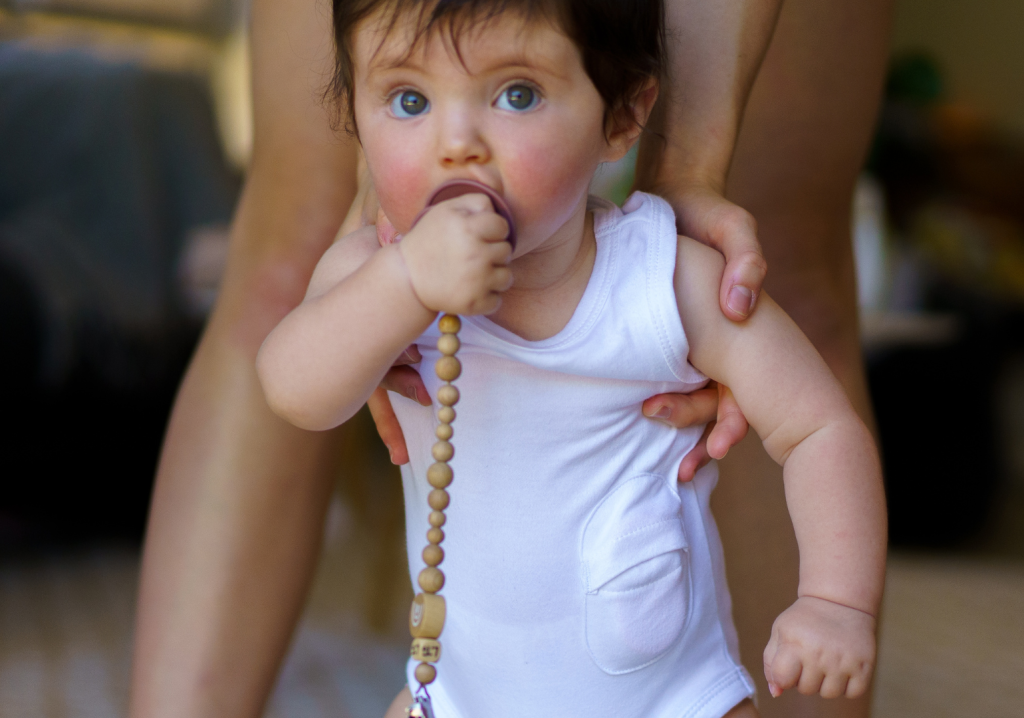The Goldilocks suit, which tracks babies’ breathing, temperature and other key indicators, aims to help parents understand the medical needs of their newborn — and could one day be implemented for seniors.
Like most new parents, Shem Richards’ experience of bringing home his first baby was life-changing. Unlike most new parents, he turned the anxiety of trying to work out what his newborn’s cries meant into a medtech startup that hopes to change the way we think about healthcare.
The result is the Goldilocks suit, a baby monitoring system that blends state-of-the-art biomedical technology with medical expertise to help parents navigate what can be one of the most stressful time of their lives.
“We have two thermistors: one for core temperature and one for skin temperature, as well as an accelerometer gyro, which sits on the diaphragm and detects things like breathing waveforms and gross motor movements,” Richards, a medical device engineer, told create.
As co-founder of the Adelaide-based startup, Richards explained that the suit is designed to help parents understand what their babies are feeling by monitoring their breathing, temperature and other key indicators, tracking it all continuously via the company’s app.
In the next year, Goldilocks aims to expand to products for seniors. But for now, the product is squarely aimed at helping new parents understand why their baby is acting the way they are.
“Back in the day when your baby cried, you went through a list,” Richards said. “Should I check their temperature? Change their nappy? With Goldilocks, what the AI and the sensors are able to do is automatically tell you that they’re due for a feed or are uncomfortable.”
The AI used by the app also provides information, such as steps recommended by consultant clinicians to help resolve the issue. Richards believes that this will speed up the time it takes someone to comfort their baby, and reduce stress levels for everyone.
“We work with around 20 clinicians, from physios to obstetricians to sleep psychologists, who provide inputs through the app,” he said.
The AI helps the parent triage the situation and the Goldilocks app offers around 40 hours of videos from medical experts. Parents can access talks about what to do when their baby has a temperature and other afflictions. If they want more information, they can then log into the telehealth portal and speak directly to clinicians.
Learning curve
Richards said that, in 2012, he was among the first cohort of students in Australia to specifically study biomedical engineering. Since then, he’s learned a lot — and hopes that the local industry will continue to foster other students like him with help from universities and other research organisations.
At times, the learning curve was difficult.
“As an engineer, I learned that there’s no point making cool stuff if people aren’t going to buy it,” he said. “The first thing that Adelaide University forced me to do was get out there and speak to around 100 potential customers.”
Richards also learned that it’s one thing to build a handful of prototypes, but another to engineer and design millions of them. Still, he found that the main challenges were on the healthcare side of the business rather than the technical aspects.
“The friction is in getting clinician buy-in, and getting clinicians to run trials of the product,” he explained.
With that now in hand, the next hurdle for Goldilocks is screen printing the wires and sensors into the garment with silver fabric to make it even more comfortable.
From there, the startup is aiming to launch its aged care product within the next year, focused on helping people with dementia maintain safety and independence in their own homes.
“It’s aimed at becoming a non-drug solution for dementia, which is typically treated with antipsychotics that [may] have side effects of confusion, wandering and losing balance,” Richards said.
“We [will] monitor things such as falls through gait analysis, whether they’ve remembered to turn on the air conditioner through body temperature, as well as sleep and sleep apnoea.”
As the name suggests, Goldilocks aim is finding the ‘just right’ balance between wearable technology and medical need.
“Current wearables are focused on the wrist, which is a relatively poor place to pick up vital signs of the body and [covers] a small surface area,” Richards said.
“The benefit of smart clothing is that it covers the trunk. It’s a good area to pick up signals, and the large surface area fits more sensors.”
